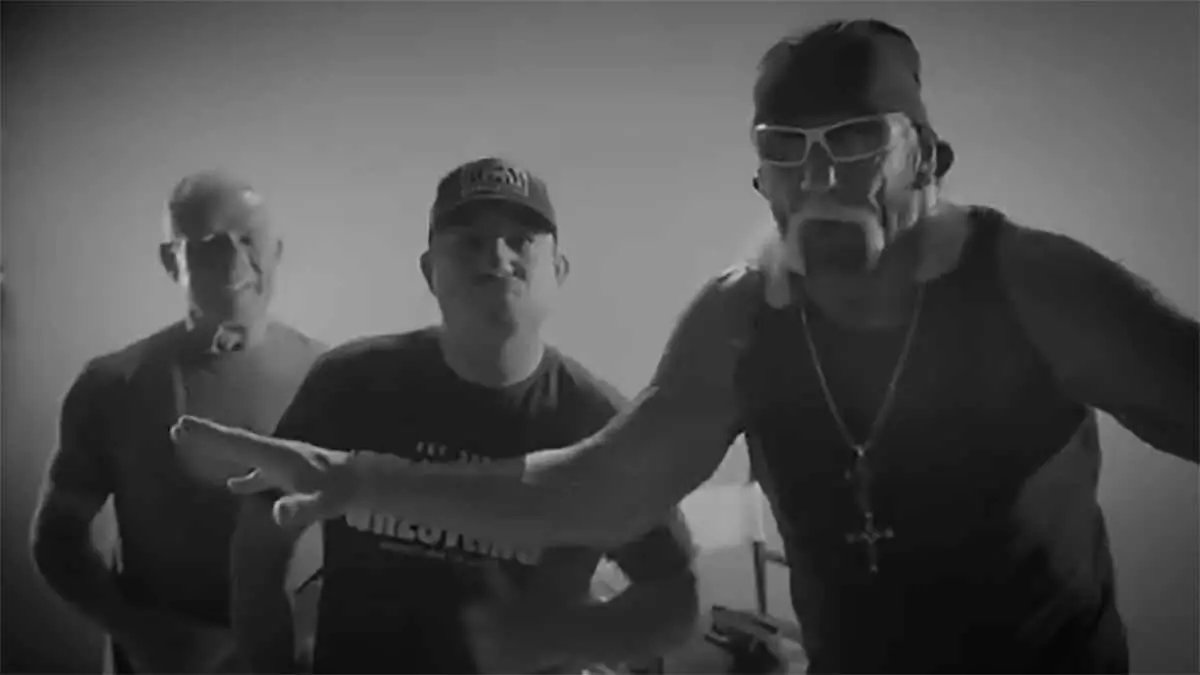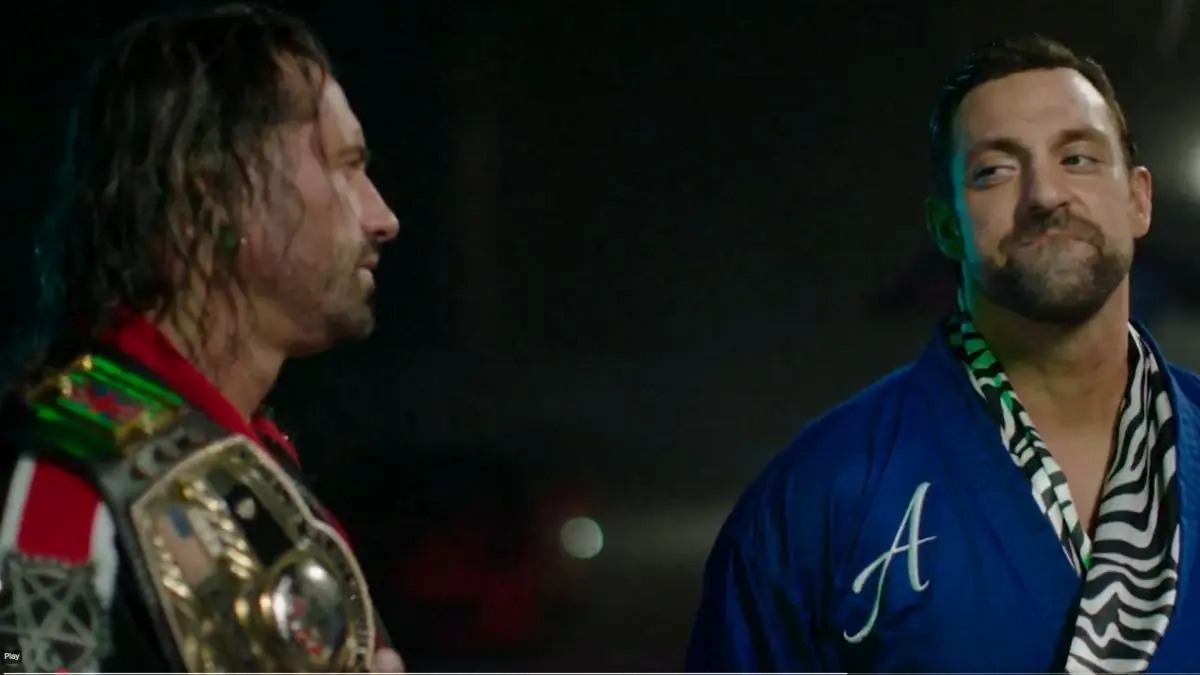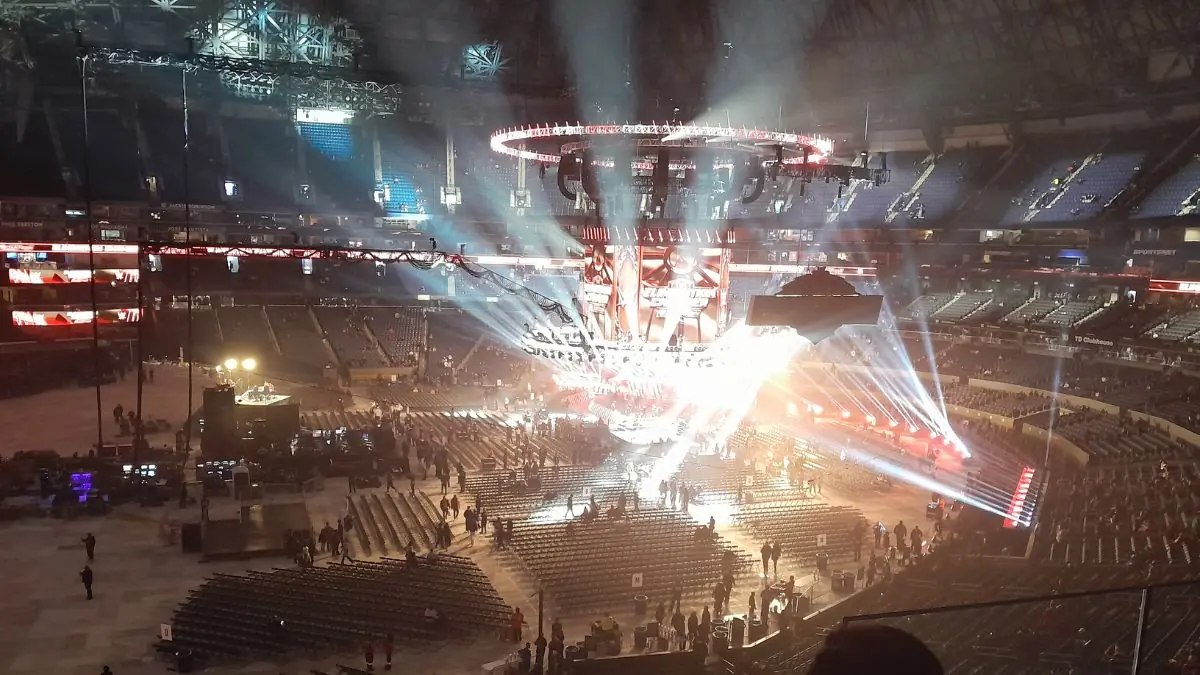When I interviewed David Arquette in March 2018 for my book, The Pro Wrestling Hall of Fame: The Storytellers (written with Steve Johnson), he gave a great quote about being accepted in World Championship Wrestling, referencing a strange 1932 movie.
From the beginning of my Arquette profile in the 2019 book with Steve Johnson:
For the record, David Arquette doesn’t think he should have been WCW World champion either. But that doesn’t mean he doesn’t relish the memories. Jovial and never defensive over the two-week title reign in 2000, he launches into a tale. “There was one time, we were all at the bar, and everyone was pretty fed up that I was the champ, hee hee, they all hated it, you know what I mean?” Arquette and Ric Flair began talking, and “The Nature Boy” came away with an appreciation for the Hollywood star, who bought a round for the bar. Shouting over the din, Flair addressed his colleagues: “Hey guys, he’s one of us!”
Given that his own family history in entertainment goes back to the days of Vaudeville, it’s not surprising that Arquette references a bizarre 1932 movie, with its circus oddities welcoming in an outsider with a creepy, pulsating chant around the dinner table. “Literally, at that moment, I was so happy. It was like my Freaks moment, ‘One of us, one of us.’ ”
Confession time. Until recently, I hadn’t seen Freaks, only the clip he referenced.
Now that I have, ooh boy, the film is so much like pro wrestling, from its strange, outside-of-society culture, to its incestuous traveling sideshow nature, that it’s eerie.
It played on Turner Classic Movies, which summed it up like this: “A lady trapeze artist violates the code of the side show when she plots to murder her midget husband.”
The film is directed by Tod Browning, and it is intense. Labelled as horror, it doesn’t compare to more recent scary movies, but it’s sure to leave you thinking.
Besides wondering how a major movie studio like MGM released it, you will be haunted by the actual “freaks” of the title — the pinheads, the misshapen bodies, the murderous cute-as-a-button little person. At first, I found myself thinking it was some wonderful special effects for 1932, but then it dawned on me that it was real — very, very real — other than the kicker at the end, which was Gobbledy Gooker-like.
The Boston Herald review was close to my thinking: “It is the sort of thing that, once seen, lurks in the dark places of the mind, cropping up every so often with a dourful persistence.”
If you want to know more about the film, TCM has collected a list of reviews and commentary about the film; that’s not my goal here.

And I’m going to overlook the idea of #CancelCulture, as there would be protests in the streets today about exploitation of the human oddities for the profit of the studio.
What resonated with me was Arquette’s analogy, that professional wrestling is a closed business and acceptance is difficult for an outsider.
Personally, I experienced that. The first few that allowed me behind the curtain in the 1980s became treasured allies, but I never felt a real part of the industry until attending a full Cauliflower Alley Club reunion in 2001. My own “one of us” moment was probably 2011, when on subsequent nights, I sat at the tables of CAC honorees, “Cowboy” Dan Kroffat, and then Rick Martel, surrounded by the likes of Jake Roberts, the Honkytonk Man and other veterans trying to top each other with Stu Hart impressions.
The protectiveness of the business doesn’t ring as true today as it once did; but certainly 20 years ago, when Arquette was thrust on top as WCW World champion, it was there. The playing field hadn’t yet been evened out, where social media and especially YouTube could be proof that you were in fact a pro wrestler even if you only wrestled a dozen times a year. Your phone does better video today than all but the most expensive camera equipment in 2000.
The closed nature of the business has been a big part of the first two seasons of the NBC sitcom Young Rock, too. You protect the business, at all costs, you keep kayfabe; your friends are in the business and you don’t share secrets with outsiders. Even the concept of such a sitcom would have been impossible not that long ago. The last mainstream attempt to do a similar show was Lyle Alzado’s Learning the Ropes, from 1988. That was hokey and embarrassing to wrestling fans.
In today’s wrestling world, when does a newcomer get their “Freaks moment,” with their new colleagues chanting “One of us, one of us”? (Though many of today’s fans would know it from Martin Scorsese’s The Wolf of Wall Street, which is in direct homage to the original.)
Is it after their first bump? Finishing training? First match? First year? First contract? I suspect it doesn’t happen at all. The traveling circus that was professional wrestling for a century is no more. It’s a television product now, and an open one, where every move by every wrestler or promotion is scrutinized in depth.

That acceptance, that respect, though, was at the core of Arquette’s film, You Cannot Kill David Arquette. He wanted it — again — and sought it out against all odds, against the advice of friends, family, and even doctors.
Like with Freaks, after watching You Cannot Kill David Arquette you are left disturbed by the carnival nature of it all, the strangeness of the characters, the circumstances.
In his desire for his follow-up “one of us, one of us” moment, Arquette proves that things haven’t changed at all.
RELATED LINK
https://slamwrestling.net/index.php/2020/08/27/you-cannot-kill-david-arquette-movie-review/




